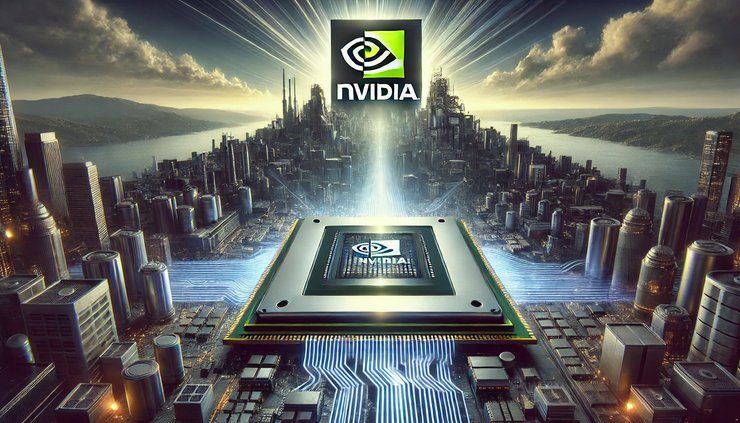(NVDA)
Well, well, well. It looks like the $3.2 trillion elephant in the room is about to get company. After watching Nvidia (NVDA) morph into a multi-trillion behemoth that now makes up 6% of the S&P 500, I've been scanning the horizon for the next big play. And folks, I think I may have a contender.
Meet Cerebras Systems, a gutsy newcomer that reminds me of the early semiconductor players I covered in Tokyo back when transistors were still considered cutting edge. They're eyeing a $1 billion IPO with a valuation north of $7 billion, which might sound ambitious until you see what they're bringing to the table.
So what’s their secret? They have a monster chip called the Wafer-Scale Engine that makes conventional processors look like pocket calculators. We're talking about 4 trillion transistors packed into silicon that's 57 times larger than Nvidia's best offerings.
After decades of watching tech cycles come and go, I've learned that sometimes the most promising plays come from companies willing to completely reimagine the fundamentals. And that's exactly what Cerebras is doing.Let's dive into the nuts and bolts.
Founded in 2016 by CEO Andrew Feldman, Cerebras took the traditional chip design playbook and tossed it out the window.
Instead of dealing with thousands of individual dies - each with their own defects that need to be tossed - they went big. Really big. Their WSE-3 chip can train models ten times larger than OpenAI's GPT-4 and pushes out 125 petaflops with over 21 PB/sec bandwidth.
The clever bit? They've integrated the memory right into the chip. Anyone who's spent time optimizing systems knows that shuffling data between memory and processors is like trying to drink through a coffee stirrer.
Cerebras just eliminated that bottleneck entirely.
But here's where it gets even more interesting. Cerebras is planning to list on the Nasdaq under CBRS, which would make them the first pure-play AI chip maker to IPO during this AI gold rush.
The timing could be perfect - or perfectly terrible.
The challenge? They're going up against Nvidia's full-stack empire. Jensen Huang and his team haven't just built chips; they've created an entire ecosystem that runs from silicon to software. That's a tough act to follow.
And there's a red flag we need to talk about.
Right now, 87% of Cerebras' revenue comes from one client - G42, an Abu Dhabi-based AI outfit. That's the kind of customer concentration that keeps risk managers up at night. While they claim to be in talks with major U.S. tech players, they'll need to diversify fast to be taken seriously.
But the performance numbers? They're eye-popping.
Recent tests show their CS-3 system smoking Nvidia's H100 GPUs by up to 22 times in inference tasks. They're pushing 2,100 tokens per second as of October, up from 450 in August. That's the kind of improvement curve that makes tech investors salivate.
There are limitations, of course. The current SRAM setup puts a ceiling on their memory capacity. To handle the really big models - like the 405 billion parameter Llama - they'll need some clever engineering solutions.
Now, let's talk dollars and sense.
Cerebras is playing the cost game smart. Their cloud offerings run about 2.75 times cheaper per token per second than Nvidia's H100 systems.
For public cloud users, that advantage jumps to 5.2 times. That's the kind of math that makes CFOs pay attention.
So what's the play here?
Cerebras isn't going to dethrone Nvidia overnight. Nobody is. But they don't need to. In the AI chip space, even capturing a small slice of the pie means billions in potential revenue.
For investors looking at the upcoming IPO, here's my take: This is classic high-risk, high-reward territory.
The technology is solid. The market opportunity is massive. But they'll need to execute flawlessly to justify that $7-8 billion valuation.
Keep your eye on three things: customer diversification, U.S. market penetration, and their ability to scale up production without scaling up problems.
Remember, today's underdog can become tomorrow's top dog faster than you can say "semiconductor." Just ask anyone who passed on Nvidia at $25 a share.
The AI chip war is far from over. And Cerebras just might be the dark horse worth watching.






